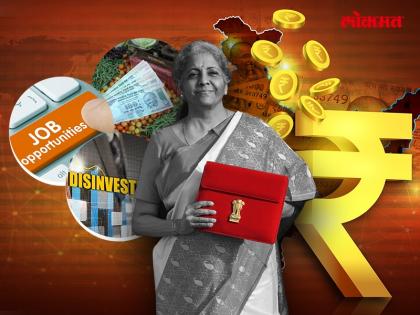Nirmala Sitharaman tables Economic Survey 2022-23; Key highlights
By Lokmat English Desk | Published: January 31, 2023 03:05 PM2023-01-31T15:05:28+5:302023-01-31T15:11:59+5:30
Finance Minister Nirmala Sitharaman tabled the Economic Survey 2022–23 in Parliament on January 31, one day before the Union ...

Nirmala Sitharaman tables Economic Survey 2022-23; Key highlights
Finance Minister Nirmala Sitharaman tabled the Economic Survey 2022–23 in Parliament on January 31, one day before the Union Budget, which she will present on February 1. According to the Survey for 2022–23, India's GDP growth for the following fiscal year 2023–24 is in a range of 6–6.8 percent.
Key highlights of Economic Survey 2022-23
- Steel production: The country is now a global force in steel production and the second-largest crude steel producer in the world. The steel sector’s performance in the current fiscal year has been robust, with cumulative production and consumption of finished steel at 88 MT and 86 MT, respectively.
- Pharma sector: cumulative foreign direct investment (FDI) in the pharma sector crossed the $20 billion mark in September 2022. Further, FDI inflows have increased four-fold over the past five years until September 2022, to $699 million. Growth in pharmaceutical output has slowed due to an unfavourable base effect and the waning of the COVID-19 pandemic.
- Health sector: Central and state governments’ budgeted expenditure on the health sector reached 2.1 percent of GDP in FY23 (Budget Estimate) and 2.2 percent in FY22 (Revised Estimate), against 1.6 percent in FY21.
- Inflation: Retail inflation is back within the Reserve Bank of India's (RBI) target range in November 2022. While the year 2022 witnesses a return of high inflation in the advanced world after three to four decades, India caps the rise in prices. The RBI’s anchoring of inflationary expectations through forward guidance and responsive monetary policy has helped guide the trajectory of inflation in the country.
- GST collection: GST revenues have increased as a result of the rapid economic recovery following the pandemic, a crackdown on GST evaders and fake bills, numerous systemic changes implemented, and rate rationalization.
Open in app